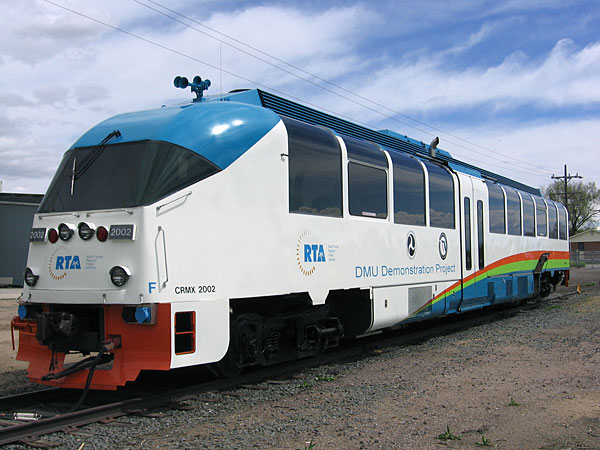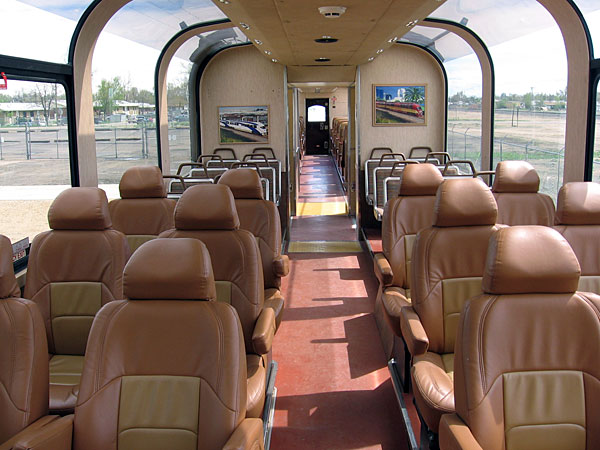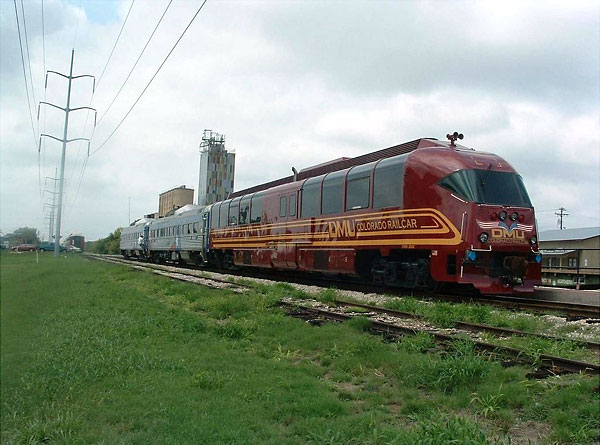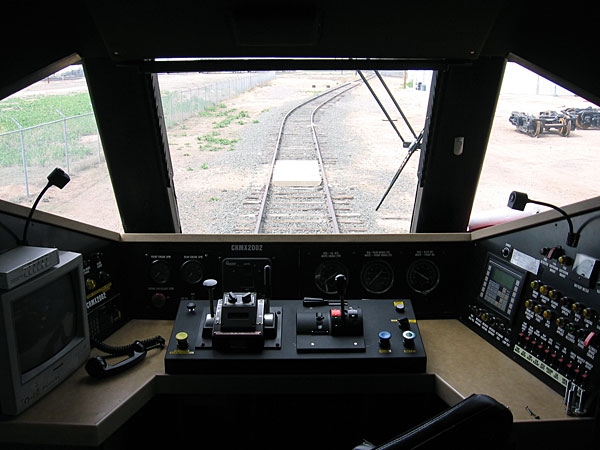This website has been archived from TrainWeb.org/ultradomes to TrainWeb.US/ultradomes.
|
Colorado Railcar 's DMU Prototype CRMX 2002
They said it couldn't be done. But in 2002, Colorado Railcar unveiled the prototype for a line of Diesel Multiple Unit (DMU) cars that were compliant with the FRA's stringent Part 238 structural requirements. The 2002's design wasn't Earth-shakingly radical, but instead was an application of CRM's existing single level car design. It features a bridge truss design that allows it to attain the strength necessary to pass the structural tests required by part 238. (To learn more about the requirements of part 238, see the Compliance page.) Being decidedly low-tech is part of the Colorado Railcar DMU's allure. Everything in it - top to bottom - is configured around parts that are common in the industry, from its motors and trucks to its seats. Ease of maintenance is a feature that should be attractive to cash-strapped agencies.
As a demonstrator, the 2002 played a vital part in getting Colorado Railcar moved firmly into the DMU era. It toured extensively all over North America before being sold to the Florida Department of Transportation. The Colorado Railcar DMU is powered by a pair of Detroit Diesel Series 60 engines generating 600 horsepower. Power is transmitted to the rail via a pair of Voith hydrostatic drives. The combination is capable of keeping a regular schedule with two coaches in tow, and climbing fairly steep grades. The design is economical also. In testing, the 2002 achieved an amazing fuel economy of two miles per gallon. (To learn more about that, check out the DMU Advantages page.)
CRMX 2002 was configured as a demonstrator, with several options and features that may not find their way all onto a service vehicle. It is equipped with CRM's optional aero nose, as well as the dome type windows that are fitted in the company's luxury cars. The car can be built with regular windows, a flat nose, and cabs on both ends if needed. The interior is also outfitted to show several different possible configurations, including four-top table seating, large business class seats, and smaller more economical commuter seating. In operating trim, it is suposed to seat 96.
CRMX 2002 suggests several very different ideas for commuter service. It shows a glimpse of the vehicle's potential, and the company's future. All in all, it was a very well done car that seems to harken to a more luxurious mode of transport than the common commuter car. It has been well recieved in testing, and hopefully will find its niche in the North American market. |
Return to the DMU home page
Roster / Single Level / Double Deck / Coaches / FRA Compliance
Advantages / Comparison / Photos / Ultradomes Home


















